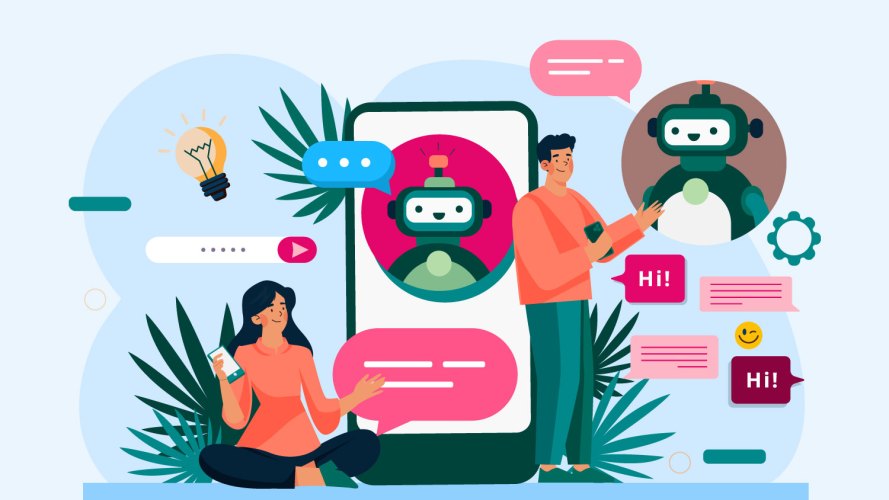What Is Good Customer Service?

It’s not easy to achieve the high level of service customers expect – but it’s definitely possible. Here’s how to make sure your customer service delivers.

Jill Wagner
Good customer service is important — whether we’re receiving or providing it. But what is good customer service, anyway?
Good customer service means meeting customer needs and expectations consistently. This can lead to business growth — even when you’re not at your best.
Our research found that 88% of customers say good customer service makes them more likely to purchase again. What’s more, 75% of customers forgave a company’s mistakes after receiving excellent customer service.
Let’s look at the ins and outs of good customer service and how to set up for success.
What you’ll learn:
- What is good customer service?
- Why is good customer service important
- Benefits of good customer service
- Good customer service examples
- 4 ways to improve customer service
- How to measure good customer service
- How to get started
Dig into our latest customer service research
High-performing service organizations are using data and AI to generate revenue while cutting costs — without sacrificing the customer experience. Find out how in the 6th edition of the State of Service report.



What is good customer service?
From a customer’s perspective, good customer service is fast, seamless, and easy. It’s also consistent, convenient, personalized, and empathetic. The same applies to your business when providing customer service.
The customer reaches out on their preferred customer service channel – voice, video, email, chat, or even self-service option like a customer portal. Agents are available to help when needed, and the customer doesn’t have to repeat themselves. The agent understands the issue, is empathetic, and resolves the problem the first time the customer reaches out.
Of course, such a seamless customer experience doesn’t just magically happen. It takes well-trained agents with the right customer service skills. And it takes supportive, smart technology — specifically an omnichannel CRM, plus connected data, artificial intelligence (AI) and automation. Thanks to advances in technology, all this is now possible. (Back to top)
Why is good customer service important?
Our research found that 86% of service professionals say that customer expectations are higher than they used to be. If they’re not met, customers will walk: 48% have switched brands for better customer service. Remember: the majority of customers say good customer service makes them more likely to make another purchase. So providing good customer service will help you prevent attrition and boost loyalty. What’s not to like? (Back to top)
Benefits of good customer service
Providing good customer service is a great way to build a loyal customer base over time. Here are some benefits you may experience for consistently great customer service:
- Brand loyalty. It’s more cost-effective to keep an existing customer than recruit a new one. Your support team has an important role to play in customer retention – and therefore revenue. Happy customers, after all, are loyal customers.
- New revenue opportunities. To be of help, agents must understand the customer’s needs. This puts them in a unique position to spot – and act on – opportunities for cross-selling and upselling.
- Competitive edge. Good customer service is so important that brands can use it as a way to differentiate themselves from the competition. Every advantage helps.
- Employee retention. Our research found that 69% of service decision makers say agent attrition is a major or moderate challenge. That’s a pain point, because you need well-trained agents to deliver outstanding service. Making good customer service a priority means investing in training, and investing in your employees. This can help improve retention. After all, people like to work where they feel valued. (Back to top)
Good customer service examples
Our research finds 61% of customers say most companies treat them as a number. Good customer service makes customers feel valued and recognized.
How can you go the extra mile for your customers? Here are a few real-world examples of stand-out service to inspire you:
- E-commerce: A customer receives a sweater from a clothing subscription service and wears it all the time. After just a few months, the edge of the sweater starts to fray and unravel. The customer reaches out about the problem using live chat and asks if it’s still in stock. The company not only refunds the customer but also notifies their stylist to keep an eye out for a replacement. Once available, the sweater is sent to the customer free of charge.
- Retail: A grocery shopper inadvertently buys expired food. They return the product to the store and are met with a hassle-free refund process, receiving double the money back plus a gift card. Going forward, the store leans on data to identify common quality complaints and train staff on how to handle returns. The store retains its reputation and earns trust with the customer, who now knows they’ll receive nothing but the best from this particular business.
- Field service: A homeowner experiences a recurring issue with their high-tech security system, which seems to malfunction at random. Before the customer reaches out for help, the security company’s field service team identifies the reason for the failure with AI-powered sensors that track back to their field service management. A technician proactively reaches out to schedule a service visit, fixing the root cause of the issue and even optimizing the system for future performance. All before the homeowner has even contacted the company with a complaint. This is good customer service for asset service management in action.
These examples are made possible through deliberate investment in the customer service experience. These companies have well-trained service agents. They have connected, reliable data about their customers. They use AI to help them identify issues. All this makes the customer experience — even in the face of a problem — overwhelmingly positive. (Back to top)
4 ways to improve customer service
By now, you can see that upping your customer service game is the right thing to do. But how? Here are four approaches:
- Put customers in the driver’s seat. Our research found that 61% of customers prefer self-service for simple issues. Set up a help center (also known as a knowledge base) and a customer portal, where customers can find the information they need. Or create a community, where customers can come together to solve common issues. Automate common processes – like updating an address – and then share those processes in a knowledge article in your customer portal, so your customers can help themselves.
- Consider adding channels. Customers want to reach out on the channel that’s most convenient to them — whether voice, video, SMS, live chat, in-person at your retail location, or others. To better understand what your customers prefer, analyze how they use your channels now. Where are there opportunities to make service more seamless, and which channels could you add to support this goal?
- Connect your data. In order to provide excellent customer service, agents need to see all the relevant information about that individual, whether it’s housed in your CRM apps or your external data lakes. That way, when a customer moves from one channel to the next – for instance, from email to phone support – they don’t have to start all over. Unfortunately, customers repeat themselves far too often: 56% often have to repeat or re-explain information to different representatives. Connected data helps you avoid this problem. Instead, you can deliver seamless service every time.
- Serve with empathy. When a customer reaches out, they’re looking for someone who gets what they’re going through. Training agents to deliver service with empathy helps customers feel like they really matter to you. So invest in customer service training to help your team build not only knowledge about products and services, but also their interpersonal skills. (Back to top)
How can technology help you deliver good customer service?
Providing good customer service was once a matter of taking detailed notes on paper. Now, technology lets agents quickly help a greater number of customers, all while keeping quality high. Here are the key technologies that make excellent service possible, even as the volume of service interactions grows:
- Customer relationship management (CRM) software. A CRM platform acts as your central source of truth, where agents can see all the relevant data about each customer and their interactions with your business. It’s the foundation of fast, personalized service.
- AI and automation. AI and automation make service delivery faster. Automate manual processes that support agents do frequently, and you’ll save them time and boost productivity. AI can act as a virtual assistant to your agents, suggesting next best actions, and serving up relevant knowledge articles while an agent is on a call or live chat. Generative AI can even suggest personalized responses to the customer or generate case summaries, saving agents even more time.
- Robust data platform. We’ve already talked about the power of connected data – but how do you actually connect it? Each time a customer reaches out to your business, more data is created. How do you keep track of it all? You need a powerful data platform (like Salesforce Data Cloud) to unite and harmonize all your data. Data Cloud brings all your data, no matter where it’s housed, inside Salesforce for a full, 360-degree view of your customer.
- Chatbots: Customer cases continue to rise. To lessen the load on your agents, shift some of the responsibilities onto chatbots. These can help customers with simple problems, route them to the right agent or department, provide answers 24/7, and more. Chatbots are becoming more sophisticated, offering a seamless, fun way for handling straightforward customer issues.
- Service analytics. In order to improve your customer service, you need to know where it currently stands. You need to be able to visualize and understand key pieces of information. This includes which channels customers use to contact you, how long each service interaction takes, how satisfied customers are with your customer support, and more. You need technology that turns contact center data into easy-to-understand charts and reports. Service Intelligence can help you here, by turning your customer support interaction data into actionable insights. (Back to top)
How to measure good customer service?
If you want to improve customer service, it’s important to measure and track your progress. Tried-and-true key performance indicators (KPIs) like case volume and average handle time are still important. But you also need to capture the broader customer experience. Here are some metrics to consider:
- Customer satisfaction scores (CSAT). A company gathers customer feedback, usually through surveys, about how satisfied customers are with a company’s products or services. Customers rate your business, often on a scale of 1 to 5, with 5 denoting the highest level of satisfaction. Your CSAT is the share of satisfied customers. So if you have 100 respondents and 60 of them rate themselves as either “satisfied” or “very satisfied,” your CSAT score would be 60%.
- Net Promoter Scores (NPS). This metric gauges customer loyalty by asking how likely customers are to recommend your business to their friends. People answer on a scale of 0 (not at all likely) to 10 (definitely will recommend). Those who score 9 or 10 are considered promoters of your brand. Those at 0 to 6 are considered detractors. Your NPS is the percentage of promoters minus the percentage of detractors. For example, if you have responses from 100 customers with 50 promoters and 27 detractors, your NPS is 23.
- First Call Resolution. Also known as First Contact Resolution, this metric tracks whether a company was able to resolve an issue the first time the customer reached out. To capture it, you divide the number of complaints successfully resolved on the first try by the total number of customer interactions, and multiply by 100.
- Customer Efforts Score (CES). This measures how easy it is for customers to use a product or service, find the information they need, or get their issue resolved. Most organizations measure CES through a customer satisfaction survey after a service interaction, aka “How easy did we make it to resolve your issue?” Customers respond on a multi-point scale (strongly agree, agree, neither, disagree, strongly disagree). Your CES is the percentage of respondents who select the “agree” options. (Back to top)
How to get started
If you’re looking to improve your customer service, a great place to start is by assessing what’s working now and what’s not. Then define your goals – what you want your customer experience to be like. From there, look for technology solutions, and possibly training for your service agents, that will empower you to bridge the gap.
Good customer service is well worth your time and investment. Your agents will become more productive, your customers more satisfied. Your brand reputation will improve, customer loyalty will rise, and CSATs will soar. (Back to top)
Looking to boost customer service efficiency? Start here
Learn how you can help your agents become more efficient — and your customers happier. When you have an easy-to-use platform for your data, agents have all the information they need to provide the care customers expect.



Devon McGinnis contributed to this blog article.



























